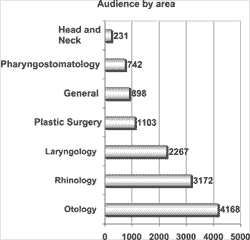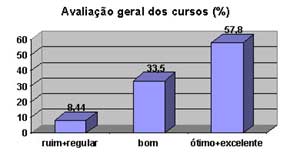

Year: 2003 Vol. 69 Ed. 1 - (1º)
Editorial
Pages: 02 to 03
The Route to Scientific Maturity
Author(s): Henrique Olival Costa
Keywords: -
![]()
For years the Brazilian Society of Otorhinolaryngology, together with its Director of Publications and the various academic committees, has decided to delegate power to scientific evidence whenever dealing with the topics of interest to Otorhinolaryngologists.
This pattern of procedure has dictated the development of consensus/guidelines that were progressively adapted to the evidence-based medicine principles, reaching its peak with the recent publication of the guidelines for snoring and sleep surgery, pharyngotonsillitis and, already in the press, the guidelines for vertigo management. It did not prove to be an easy way, since personal opinions and experiences have always been the main tools in the progression of the medical profession; our resistance to the straight forwardness and cold facts of research did give rise to a number of conceptual disagreements throughout the years. Nevertheless, the route has been chosen. The possibility of presenting renown scientific studies to compete for public exhibition in the main national conferences of the specialty (the Brazilian and Triologico conferences) as well as the encouragement for authors to submit the concluded and final version of their papers, awarding the best studies in each area, have favored an environment for inventiveness and responsibility in the research area.
However, the intellectual responsibility had not been incorporated in our routine life yet, nor in idea sharing opportunities, such as speeches, conferences and classes, especially in those keynote speeches in large congresses and courses. This task has been finally kicked of by the great success of the mini-courses, promoted last year in the Brazilian congress, in Florianopolis. The mini-courses were one-hour talks that required previous registration and whose speakers submitted to the scientific committee in advance the course proposition, for planning and material preparation. There were 128 mini-courses taught, reaching a total of 13,071 registrations and amounting to an average of 102.1 people by course in four days of conferences. We also asked the participants to provide comments about the activity by answering a questionnaire. We used them to evaluate the quality of the ideas presented in the courses and also to give feedback to the speakers for their future initiatives, hearing from a public that is both demanding and intelligent. After completing data compilation and analysis about the opinion of attendees, we concluded that the courses had the following public distribution by area: Otology (4,168 people/39 courses), Rhinology (3,172 poeple/25 courses), Laryngology (2,267 people/26), Facial Plastic Surgery (1,103/8), general ENT (898/17), Pharyngostomatology (742/10), and Head and Neck Surgery (231/3). The mean number of attendees for Facial Plastic Surgery (137.8/people/course), Rhinology (126.8) and Otology (106.8) exceeded the general mean values.
The courses, regardless of the area, were appraised as follows by the public: 50 were above the average, 14 were on average, and 64 were below average, which made us conclude that some courses with more attendees helped increase the average. The two main audiences of mini-courses were for septoplasty (332) and rhinoseptoplasty (324), both offered on the first day of the congress. This was another point that called our attention: the mean number of attendees differed a lot from day to day, being that the first day had the largest audience, with 137.7 people by room, followed by the 2nd day, with 124.6, 3rd day (106.7) and 4th day (38.4). It is interesting to notice that if we combine the areas that are normally together in the schedule of conferences such as the Triologico, we will see Otology/General ENT (5,066 people/56 courses - mean of 90.4), Rhinology/Plastic Surgery (4,275/33 courses - mean of 129.5), and Laryngoscopy/ Pharyngostomatology/ Head and Neck (3,240/39 - mean of 83), which shows the main interest in the area of Rhinology by our public (highest mean and the greatest audience in the courses).
Apart from audience numbers, the data provided information about courses' quality ad their capacity to influence the professionals' lives. This is probably the main task of this statistics, considering that these are courses in which the speakers' personal contributions are essential and they are scrutinized by colleagues who are as experienced as themselves and who are entitled to express their opinions, be them favorable or not. Owing to this type of dynamics, the individual character assumes the power of moderator and a pattern of responsibility that is going to be improved with time.
The satisfaction level was very high, as shown in the graph that depicts the options rated as excellent, very good, good, fair and poor.
Even though 74 courses were rated by over 50% of the public as excellent and very good, we noticed difficulties of public interaction. This fact seems to be related to our strict timeframe - 50 minutes for presentation and discussion.
Therefore, we have inaugurated a new phase in scientific communication at the Brazilian Society of Otorhinolaryngology. We will probably have a great impact in the next congresses if we can define the rules to organize a schedule that comprises the main interests shown by the public, so that we can share knowledge based on personal experience and in accordance with the principles of scientific responsibility. It will be definitely good for science. It will be good for the physician, and above all, for our patients.
All rights reserved - 1933 /
2025
© - Associação Brasileira de Otorrinolaringologia e Cirurgia Cérvico Facial

